Samsung Galaxy S 2 (International) Review - The Best, Redefined
by Brian Klug & Anand Lal Shimpi on September 11, 2011 11:06 AM EST- Posted in
- Smartphones
- Samsung
- Galaxy S II
- Exynos
- Mobile
Inside SGS2
There have been a number of teardowns of the SGS2, and for the most part usually there isn’t a need to open up devices unless the FCC photos don’t suffice. This time around I still have a number of questions about what component choices had been made for the SGS2, so it went under the screwdriver (and emerged unscathed) just so we could get a glimpse at the goods.
SGS2 comes apart easily enough, with a few philips (no Torx bits) screws on the back and then a couple prods with a plastic tool to get the snaps off. Construction in this regard is very similar to the original SGS. After that, you have access to the PCB, backside, and frame.
You can see how SGS2 achieves its thinness by looking at the layout. The PCB doesn’t run underneath the battery - the majority of device thickness is defined by the SAMOLED+ panel plus battery thickness.
In addition, the SGS2 locates the cellular antenna at bottom in a modular speaker plus antenna module that snaps in and out of the plastic backside. The depth of SGS2 at its thickest seems governed by this speaker and its resonating chamber. Off to the other side is the bottom microphone, cellular feed cable, and gold contacts for getting that connected to the silver antenna.
There’s another second antenna to the opposite side of the module, which is for Bluetooth and WiFi.
If we turn our attention to the PCB we can see the rest of SGS2’s interesting bits.
The EMI cans thankfully snap off easily, and underneath we can see right next to the microSD card slot is the Infineon/Intel X-Gold 626 HSPA+ (HSDPA Cat. 14 - 21 Mbps / HSUPA Cat. 7 11.5 Mbps) baseband.
On the opposite side is the Audience 1026 noise cancelation IC, MAX8997 PMIC, and Yamaha YMU823 audio codec.
On the same side further down is the GPS that SGS2 uses, which is a SiRF GSD4T GPS. That particular die is absolutely tiny and difficult to photograph. More on the SGS2 GPS in a moment, however.
The other side of the PCB is much more interesting.
With the cans off, first we get a shot of Exynos 4210 with its PoP memory. This particular part has two mobile LPDDR2 die in the stack. Next to it, a Samsung combo NAND + DRAM part, with 16 GB of NAND and 64 MB of RAM, no doubt for the Infineon baseband.
Moving right is the Infineon Smarti UE2 RF transciever marked 5712, and the large IC below that marked RFMD RF6260 is a quad-band multi mode power amp which is a bit interesting. It works between 1710 and 1980 MHz, and 824–915 MHz, supplanting somewhat the need for individual power amps for each band.
Down on the long and skinny part of the PCB is a large package which I believe probably houses the BCM4330 WLAN module (more on that later), and next to it is a button cell battery, which seems curious.
Now remember that camera part I mentioned earlier? Well, at the top of the board you can see a ZIF slot, a relatively large IC< and then the camera module.
Compare these two, and it seems pretty obvious that this is exactly that same camera module from earlier, and most likely the large IC with Korea written on it is the Fujitsu M5MO ISP which controls it.
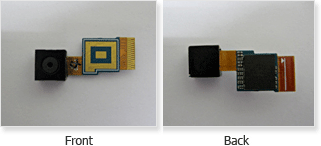
Also up at the very top is another gold connector which meets up with the SGS2’s third antenna, whose purpose is either for WLAN/GPS or another Rx finger for the cellular baseband.
The circular thing with a foam backside is the SGS2’s vibration motor, and other than that there really isn’t much more to talk about. Heat gets carried away from ICs through the EMI cans which double as heatsinks, and on the backside of the plastic back you can see a metal region and small thermal pad.


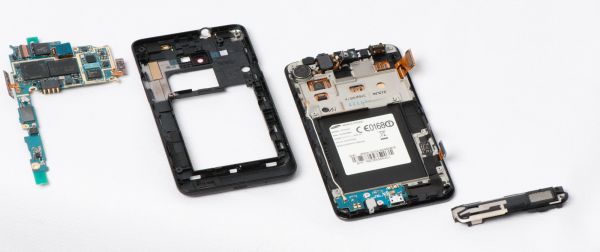
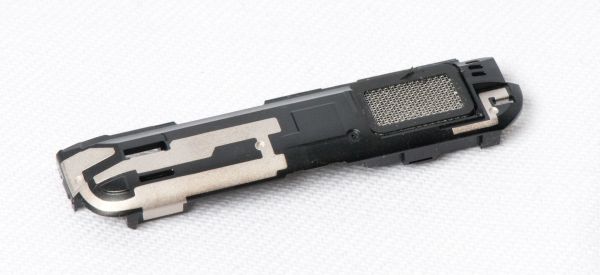
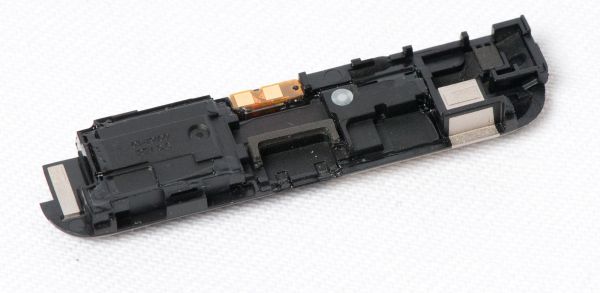

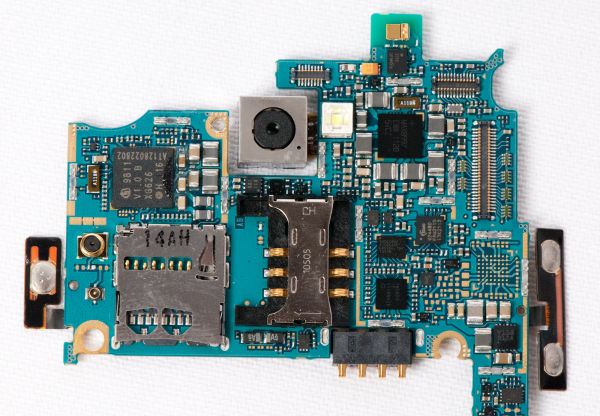
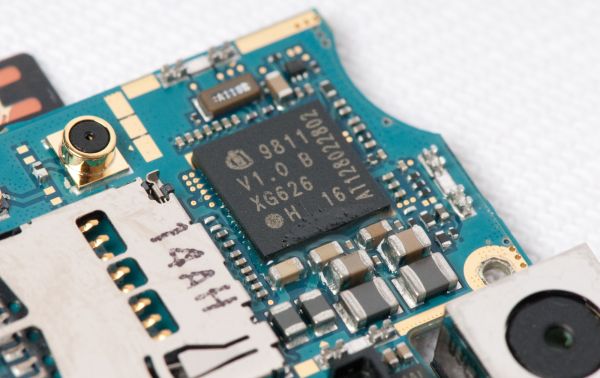
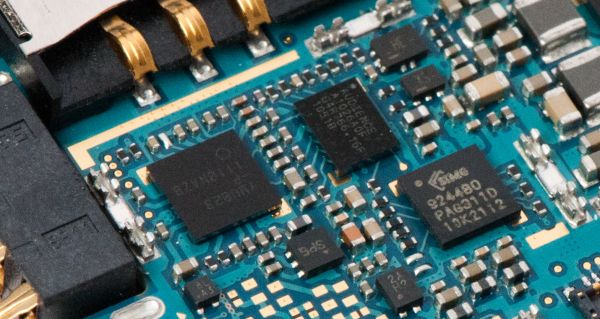
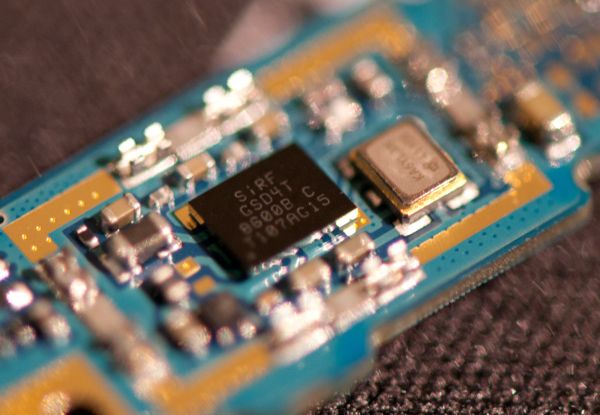
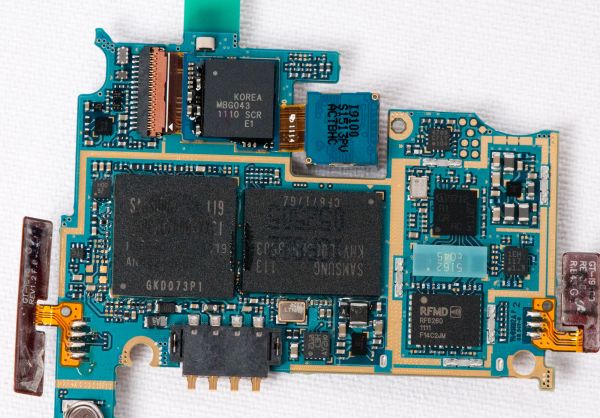
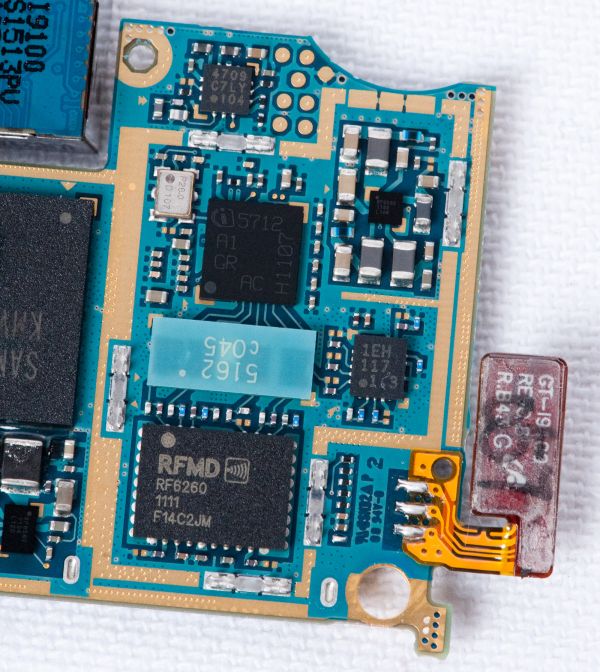
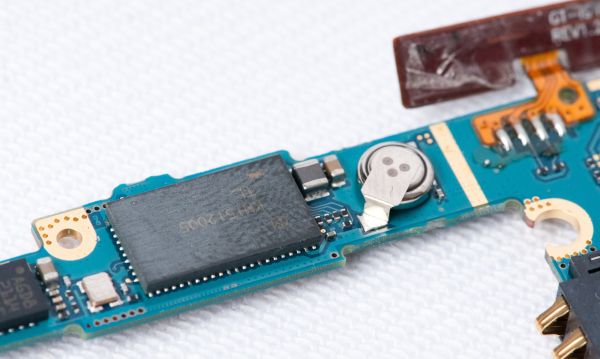

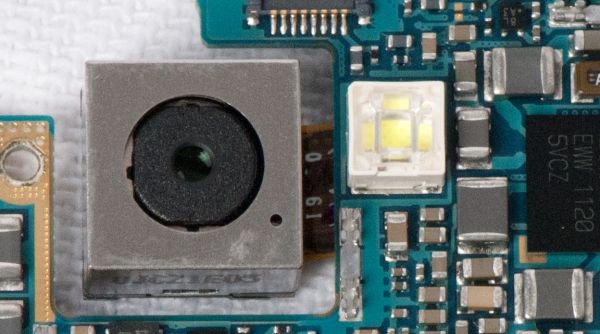















132 Comments
View All Comments
jcompagner - Monday, September 12, 2011 - link
When i am already using it for months and months now, and i am already thinking maybe next month or 2 i will replace it with its successor the Nexus Prime or what ever it may be called...Again here the complains about no updates.
What are you people complaining about, please...
Samsung releases, yes not officially but they are real samsung releases, quite often roms
for example here are the SGS2 once's:
http://www.samfirmware.com/WEBPROTECT-i9100.htm
A few releases per month, i am now on the latest one (2.3.4 of August 12)
If you look there to other phones you also will see many updates of all the latest phones of samsung.
So it is very easy and you dont need to root if you don't want to, just flash these roms. and you have a updated samsung made rom. (but yes 'leaked')
Reikon - Monday, September 12, 2011 - link
"Vellamo produces its scores directly from frame counters, so what you're looking at is a direct representation of how fast these devices scroll through the three web tests above. The Galaxy S II is 20 - 35% faster than the Photon 4G and 45 - 100% faster than the EVO 3D."You mixed up Photon 4G and EVO 3D, either in the table or the comment under it. The data shows the SGS2 20-35% faster than the EVO 3D and 45-100% faster than the Photon 4G.
Stormkroe - Saturday, September 17, 2011 - link
I thought I was the only one noticing this too. I'm also concerned with the adreno missing from the 2.1 off screen render tests, as well as pointing out that it would definitely be beating the S2 in GL 2.0 Pro if resolutions were normalized there. Feels like the whole thing was meant to really set the mali on a high horse. Don't get me wrong, I think it's great, just not "double the speed of the competition" when you throw the entire lineup in the mix.poohbear - Tuesday, September 13, 2011 - link
Nice to read this review finally, it is indeed an awesome piece of hardware. Im not even sure the iphone 5 will be able to compete? guess we'll find out next month!PWRuser - Tuesday, September 13, 2011 - link
Is the SGS2 memory the newer 30nm LPDDR2 1066 or the 800 one found in older phones?QWIKSTRIKE - Tuesday, September 13, 2011 - link
When will you do a Sprint review with CDMA antenna signal repsonsivenessOlrac - Tuesday, September 13, 2011 - link
Just for those who would like to know I am running The galaxy s2 overclocked to 1.6Ghz and its rock steady no crashes or freezes does not even get much warmerLinpack Single Threaded = 74 average and Multithreaded = 114
Revolution rom with ninphetamine 2.1.3 kernel
lamecake - Wednesday, September 14, 2011 - link
Just for comparision.. I have a HTC Sensation clocked at 1.6ghz with a Sense based rom. It's actually perfectly stable to 1.78ghz here but 1.6 should be no problem for any sensation.Linpack Single Threaded = 58 average and Multithreaded = 95
Pyramid3D 7.4.0 with faux123 0.1.4 kernel.
CM based roms just popping up, so anxious to see how a non-sense rom compares to the SGS2.
Pessimism - Tuesday, September 13, 2011 - link
is not a coin cell battery. it is a supercapacitor, sort of a cross between a capacitor and a battery, they use them as a buffer between the phone and batterylchen66666 - Tuesday, September 13, 2011 - link
Rumors of iPhone5 indicate that iPhone5 will have the iPhone4 form. If this is realy, that would quite disappoint me. I will definitely consider GSS2 when I upgrade my old iPhone3GS. I was hoping iPhone5 comes with 4"+720P display+some other improvement(new camera chip, new design of antenna, and new CPU). 4" seems to be the sweet spot to be the smart phone(not too big, and not too small). If Apple doesn't have much improvement in the display. The faster CPU is not that useful.The review is very detail. Not very happy with a couple of things on GSS2. Resolution is not high enough for a 4.3" display. Audio quality is not good. Seems like GSS2 has very good camera chip for video and photo. Really like it. From your other review, I got impression that Super ALMOD plus display is much better than IPS. From this review, seems like SALMODE+ is similar to SIPS display used on other smart phones. I haven't seen Samsung SALMODE+ display in person.